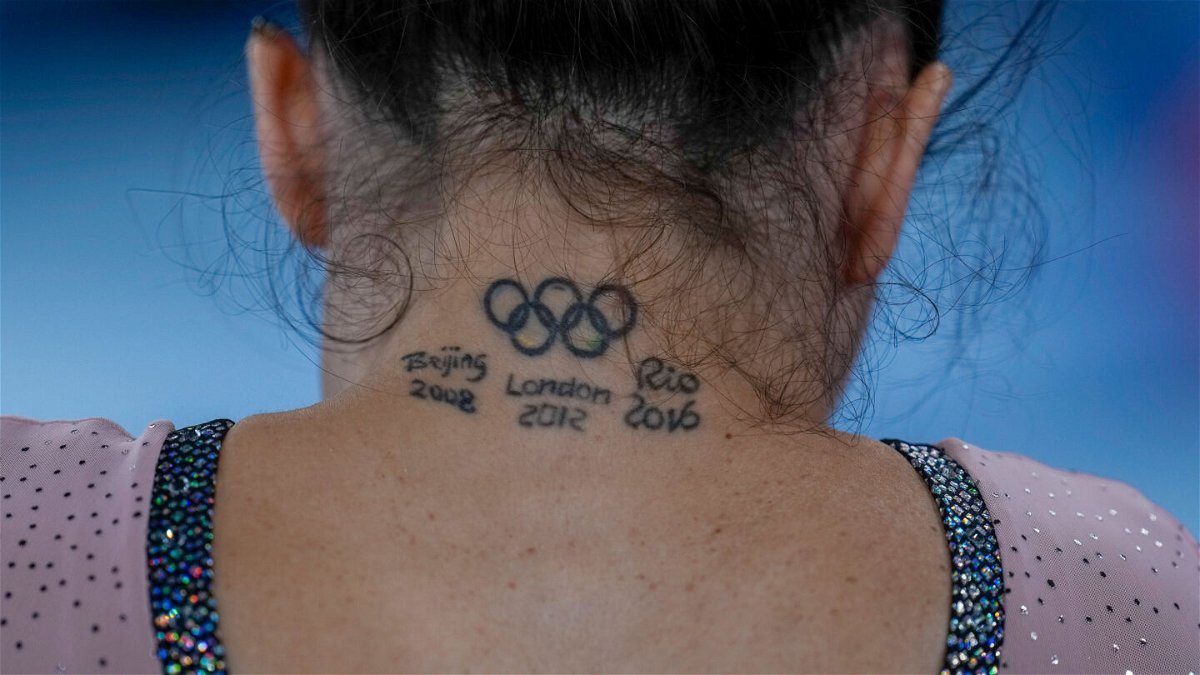Olympians’ tattoos are out in full force in Tokyo, where the art form has a complex history

Italy's Vanessa Ferrari trains during a gymnastic practice session at the Olympics in Tokyo
Leah Asmelash, CNN
There was a time when tattoos were taboo, even in the US — associated with criminals or societal rejects.
But since the 1970s, tattoos have seen a rise in popularity in Western societies especially. And it’s a trend that’s reflected in this summer’s Olympics in Tokyo.
From solid Olympic rings to bright blue sharks, many of this year’s athletes are sporting a wide range of ink. But it’s a far cry from what one sees in Japanese society in general, where tattoos are still considered taboo.
Tattoos have a long history in Japan, with the first record of decorative tattooing dating all the way back to 247 C.E., according to research out of Banaras Hindu University in India.
The art form’s popularity grew during the Edo period, which lasted from the early 1600s to 1868. It is thought to have stemmed from woodblock printmaking, and the first tattoo artists were typically woodcarvers, according to the Center for Asia Pacific Studies at the University of San Francisco. Though the Edo government worked hard to keep lower social classes in line at the time — including having strict rules regarding the types of clothing certain classes were allowed to wear — colorful tattoos were one way the lower classes attempted to push back against the restrictions, according to the center.
In 1872, under the Meiji regime, that changed. Concerned that the tattoos would be looked down upon by Western powers, the new government banned both the act of tattooing and the display of tattoos, according to Center. Though traditional Japanese tattoo style, sometimes called “wabori” or “irezumi,” has now become famous and highly sought after around the world, it was initially suppressed.
Almost a century later, in the 1960s, tattoos became associated with the Yakuza, powerful criminal gangs. The connection between Yakuza members and tattoos was so strong, that often bathhouses and hot springs would ban those with tattoos from entering, in an attempt to ban members of the Yakuza. In many places in Japan, those bans are still enforced.
In recent years, though, the popularity of tattoos in Japan has been growing — but it hasn’t been easy.
In 2017, the Osaka District Court upheld a ruling stating that only medical doctors can legally administer tattoos, a rule in place since 2001 that has been used to crack down on some tattoo artists in the country.
Though the rule may be unfamiliar to those in the West, it’s not an anomaly: South Korea has a similar law as well. In 2020, though, Japan’s Supreme Court overturned the law, ruling that tattooing people without a medical license is not a crime.
Culturally, though, tattoos still aren’t always looked at favorably in the country, even as their presence has grown in Western nations like the US. Though tattoos are growing in popularity in some subcultures within Japan, they’re still heavily stigmatized. In some cases, people with tattoos are asked to cover their ink, according to the Center for Asia Pacific Studies.
At this year’s Olympics, stigma or not, the tattoos are on full display — especially the popular image of the Olympic rings. Canadian swimmer Victor Davis is widely credited as being the first to inspire the tradition. In 1984, Davis competed in the Los Angeles Games and set a new world record for the 200 meter breaststroke with a tiny maple leaf tattoo over his heart. Four years later, American swimmer Chris Jacobs, after medaling three times at the Seoul Games, got the rings tattooed, inspired by Davis’ ink, according to WBUR.
Generations of athletes have since followed suit.
And though there’s no way to officially tell whether there are more visible tattoos now than in previous Olympic competitions, numerous studies have shown that, at least in the US, tattoos are only becoming increasingly popular. According to market research firm IBISWorld, the industry is expected to keep growing — at least partially due to pent-up demand following temporary pandemic-related shop closures.
So Olympic tattoos, it seems, are very likely here to stay.
The-CNN-Wire
™ & © 2021 Cable News Network, Inc., a WarnerMedia Company. All rights reserved.